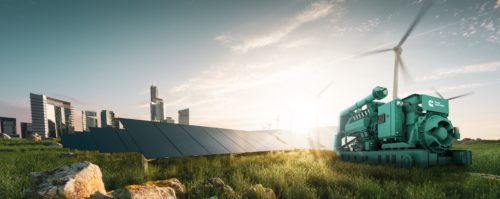Put your meter where your mouth is
Proponents, advocates, designers, and owners of green or sustainable buildings describe building sizes, construction costs, and how beneficial they are—especially from an energy or emissions perspective.
Proponents, advocates, designers, and owners of green or sustainable buildings describe building sizes, construction costs, and how beneficial they are—especially from an energy or emissions perspective. Trade publications and the popular press abound with such accounts in articles and press releases. Largely absent from pronouncements and publications are factual, measured data to support these claims, even when these data are or can become readily available from meters, submeters, energy management systems, and data loggers.
Frequently, these claims tout how green buildings are some percentage lower or better than the prevailing building code or ANSI/ASHRAE/IESNA Standard 90.1. Yet those claims often are based on models generated during the design phase, not meters, even though the building is occupied. How can readers compare green-building claims with their own buildings or with national statistics, such as the U.S. Dept. of Energy’s Commercial Buildings Energy Consumption Survey (CBECS)?
With green design implicitly or explicitly becoming common or code, this is more than a rhetorical question. The buildings’ community is owed more performance data than what they’re seeing. More specifically, designers and owners need to document and report their performances before we further ensconce green design principles and methodologies explicitly or implicitly in building codes and standards.
Consider, for example, the Environmental Protection Agency’s Energy Star program for buildings, whereby if a building’s metered energy consumption, verified by a professional engineer, is in the lowest quartile of energy consumption (based on CBECS data), it earns an Energy Star label. Thus, buildings 50 and 100 years old earn an Energy Star label without doing anything, What, then, can an engineer learn after reading a case study about an Energy Star building that does not report its actual energy consumption?
Green and sustainable rating systems, such as the USGBC LEED program, claim their certified buildings are “more energy efficient” than conventional buildings. A recent report published by the New Buildings Institute found that, on average, 121 sampled LEED NC buildings with a minimum of 12 months of metered data are about 25% more energy efficient than CBECS buildings. That same study found that less than half of the sampled LEED NC buildings would not have earned an Energy Star rating, and that a quarter of them used more energy than the average existing U.S. building. The report states, “Further investigation of the reasons for these shortfalls holds potential for significant further improvements of overall LEED performance.” Such investigations would benefit from more published data.
Here’s what would help: In green building case studies, include the actual metered energy consumption data for 12 consecutive months, along with those features and uses of the building that are unusual, such as hours of operation or energy-intensive functions. A simple table of the factual metered data, along with the size in square feet should suffice. It should be assumed that the data includes all of the energy used, including HVAC and hot water, whether purchased from utilities, or generated on-site. If all or part of the energy is not metered or measured, that should be stated, with reasons for the omission. Recognizing that data from the first year may not always be representative; metered data from the second to fifth years are preferred.
| Author Information |
| Spielvogel is a consulting engineer in King of Prussia, Pa. An ASHRAE Fellow, Spielvogel’s practice includes evaluating the metered energy performance of buildings nationally. He also is an expert witness in disputes on these issues and he lectures to industry construction groups. |
Do you have experience and expertise with the topics mentioned in this content? You should consider contributing to our CFE Media editorial team and getting the recognition you and your company deserve. Click here to start this process.



